GSMArena smartphone buyer's guide: 2015 Holiday Edition
2015 Holiday Edition

€300-€400
Absolutely unintended, this chapter turned out to be a haven for the fans of AMOLED. Also, for the most part it's filled with large phones, screens ranging from 5.5" to 6". The few compact phones that made the list are heavy hitters.
The Meizu MX5 is a powerhouse. It starts big – a 7.6mm metal body housing a 5.5" AMOLED display – and ends big – a large 1/2.3" sensor that shoots 20.7MP stills and 2160p videos. The chipset is well stocked too, though the lack of a microSD slot puts the 16GB option in question. The 32GB and 64GB ones should be okay though.
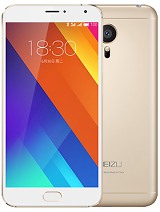
Meizu MX5 |
Pros | Cons |
|
|
|
|
| Review |
| Screen | Contrast | Sunlight | Screen-to-body |
| 346 nits | ∞ | 3.416 | 74.5% |
| Battery | Talk | Web | Video |
| 55h rating | 13:15h | 9:03h | 9:13h |
| Performance | CPU bench | GPU bench | Web bench |
| 1252 | 10403 | 1471 |
A little less-capable, but more in touch with Android updates – near-stock Android at that – is the Motorola Moto X Play. Its 5.5" 1080p screen is an LCD and the phone has a plastic exterior. It does have a water-repellant nano-coating (IP52), not as good as the Moto G, but it reduces the risk of water damage.
The camera produces high-resolution stills, 21MP, though the video tops out at 1080p. A dual-SIM version is available if you need it. By the way, there are no stereo speakers, this is just Moto's design.
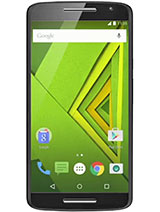
Motorola Moto X Play |
Pros | Cons |
|
|
|
|
| Reviw |
| Screen | Contrast | Sunlight | Screen-to-body |
| 620 nits | 1520:1 | 3.222 | 74.4% |
| Battery | Talk | Web | Video |
| 83h rating | 26:28h | 11:52h | 12:06h |
| Performance | CPU bench | GPU bench | Web bench |
| 809 | 5032 | 1483 |
Swinging back to AMOLED, the Samsung Galaxy A7 comes with a 5.5" Super AMOLED screen of 1080p resolution. The Snapdragon 615 chipset doesn’t quite live up to the Helio X10 (mostly in the GPU department) and the camera is a regular 13MP/1080p.
Still, the Galaxy A7 is ridiculously thin at 6.3mm and has a metal frame (with a plastic back).
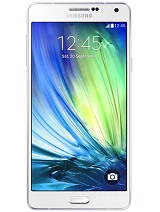
Samsung Galaxy A7 |
Pros | Cons |
|
|
|
|
| Review |
| Screen | Contrast | Sunlight | Screen-to-body |
| 349 nits | ∞ | 3.679 | 72.5% |
| Battery | Talk | Web | Video |
| 83h rating | 25:12h | 9:30h | 9:58h |
| Performance | CPU bench | GPU bench | Web bench |
| 813 | 4802 | 1655 |
The Asus Zenfone 2 ZE551ML impresses with up to 4GB of RAM (though there are 2GB versions) and an Intel chipset (the CPU is 2.3GHz and 1.8GHz respectively). There's all the storage in the world too, this model goes up to 64GB plus a microSD slot.
The Zenfone 2 Deluxe (also ZE551ML) starts at 64GB, but goes up to 128GB and even 256GB. That's the most you can have in a mobile device, especially if you add a 200GB microSD. This one also comes with an attractive tessellated back, though it is pricier.
For all that memory, the camera is pretty basic – 13MP/1080p main camera and 5MP selfie camera.
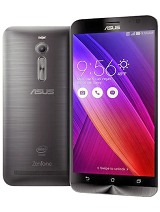
Asus Zenfone 2 ZE551ML |
Pros | Cons |
|
|
|
|
| Review |
| Screen | Contrast | Sunlight | Screen-to-body |
| 390 nits | 879:1 | 2.149 | 70.8% |
| Battery | Talk | Web | Video |
| 62h rating | 15:47h | 7:52h | 8:34h |
| Performance | CPU bench | GPU bench | Web bench |
| 13414 | 1853 |
5.5" is big, 6" is bigger. The Sony Xperia C5 Ultra has a 6" 1080p screen and loves selfies – it has a 13MP camera with autofocus and LED flash on the front, one of the best we've seen. And the same specs for the camera on the back. Unlike some of the other phones, this one is on the waiting list for Android 6.0 Marshmallow. It comes in dual-SIM flavor as well.
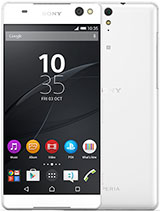
Sony Xperia C5 Ultra |
Pros | Cons |
|
|
|
| Review |
| Screen | Contrast | Sunlight | Screen-to-body |
| 422 nits | 1144:1 | 2.253 | 75.9% |
| Battery | Talk | Web | Video |
| 62h rating | 14:53h | 7:58h | 7:58h |
| Performance | CPU bench | GPU bench | Web bench |
| 931 | 5695 | 860 |
Let's do a 180 and go smaller with the Sony Xperia Z3 Compact. This petite phone hasa 4.6" 720p screen and an impressive camera – the same 1/2.3" sensor with 20.7MP resolution and 2160p video like the big Z3. It uses a Snapdragon 801 chipset, which may be long in the tooth, but its GPU is still good.
The Z3 Compact boasts IP68 waterproofing, the best yet. The 8 means it can dive beyond 1m for over half an hour. This one also packs stereo speakers on the front, unlike to Motorolas. The battery life is amazing.

Sony Xperia Z3 Compact |
Pros | Cons |
|
|
|
| Review |
| Screen | Contrast | Sunlight | Screen-to-body |
| 725 nits | 942:1 | 2.616 | 70.6% |
| Battery | Talk | Web | Video |
| 101h rating | 16:40h | 14:52h | 15:03h |
| Performance | CPU bench | GPU bench | Web bench |
| 1500 |
Another phone that can brave the elements is the Samsung Galaxy S5. Yep, last year's flagship, which tried to fight the Xperias on their turf. Samsung decided beauty trumps waterproofing for the 2015 generation. The S5 still looks better than the rugged Active phones.
It's not as small as the Z3 Compact, but it boasts a sharper screen – 5.1" 1080p Super AMOLED. It uses the same chipset and the 16MP camera has a fairly large sensor of its own (1/2.6"). With it, Samsung debuted phase detection autofocus on mobile devices.

Samsung Galaxy S5 |
Pros | Cons |
|
|
|
| Review |
| Screen | Contrast | Sunlight | Screen-to-body |
| 529 nits | ∞ | 3.549 | 69.6% |
| Battery | Talk | Web | Video |
| 83h rating | 27:37h | 9:39h | 11:15h |
| Performance | CPU bench | GPU bench | Web bench |
What didn’t make the cut
The Sony Xperia C5 Ultra has an impressive selfie camera and if that's your speed then have a look at the Asus Zenfone Selfie ZD551KL. The 13MP/1080p camera has dual-tone flash, for more color-accurate photos of your mug.
It's more compact than the C5 Ultra with a 5.5" screen and there's an option with 3GB of RAM. Still, it's pricier than the Xperia, a premium that's worth it if you are a selfie machine, but not so much otherwise.
We skipped over another 5.5"/1080p offering, the Huawei G8. It has a thin (7.5mm) metal body and a fingerprint reader on the back. The 13MP main camera isn’t that impressive compared to say the Moto X Play.
However, it has the same chipset, an optional 3GB of RAM and an update to Android 6.0 Marshmallow has been promised. Add that to the much prettier exterior and we may have a winner.
The ZTE Nubia Z9 mini would have found its place between the Xperia Z3 Compact and Galaxy S5, though the Snapdragon 615 chipset isn’t on their level. This oneis looking lower down, at the OnePlus X, for a competitor.
The vivo X5Pro impresses with its 6.4mm chassis, the 5.2" 1080p AMOLED sounds pretty great. If the Galaxy S5 isn't pretty enough, this one is a good alternative, but you do sacrifice chipset and camera performance.
The ZUK Z1 launched recently and itjumped straight into the 5.5"/1080p market on the back of a Snapdragon 801 chipset. The 13MP camera has OIS and you get a nice 8MP/1080p selfie camera. A fingerprint reader and a USB-Type C makes this an even more interesting device, though it's a bit pricy right now – an LG G3 sounds better.
Reader comments
- radosuaf
- 01 Apr 2016
- 0m1
Where is the up-to-date guide? :)
- Solun1
- 07 Feb 2016
- pYu
Galaxy Note 4 - disadvantage is "some concerns over build quality"? What? It´s the best crafted phone of 2014.




